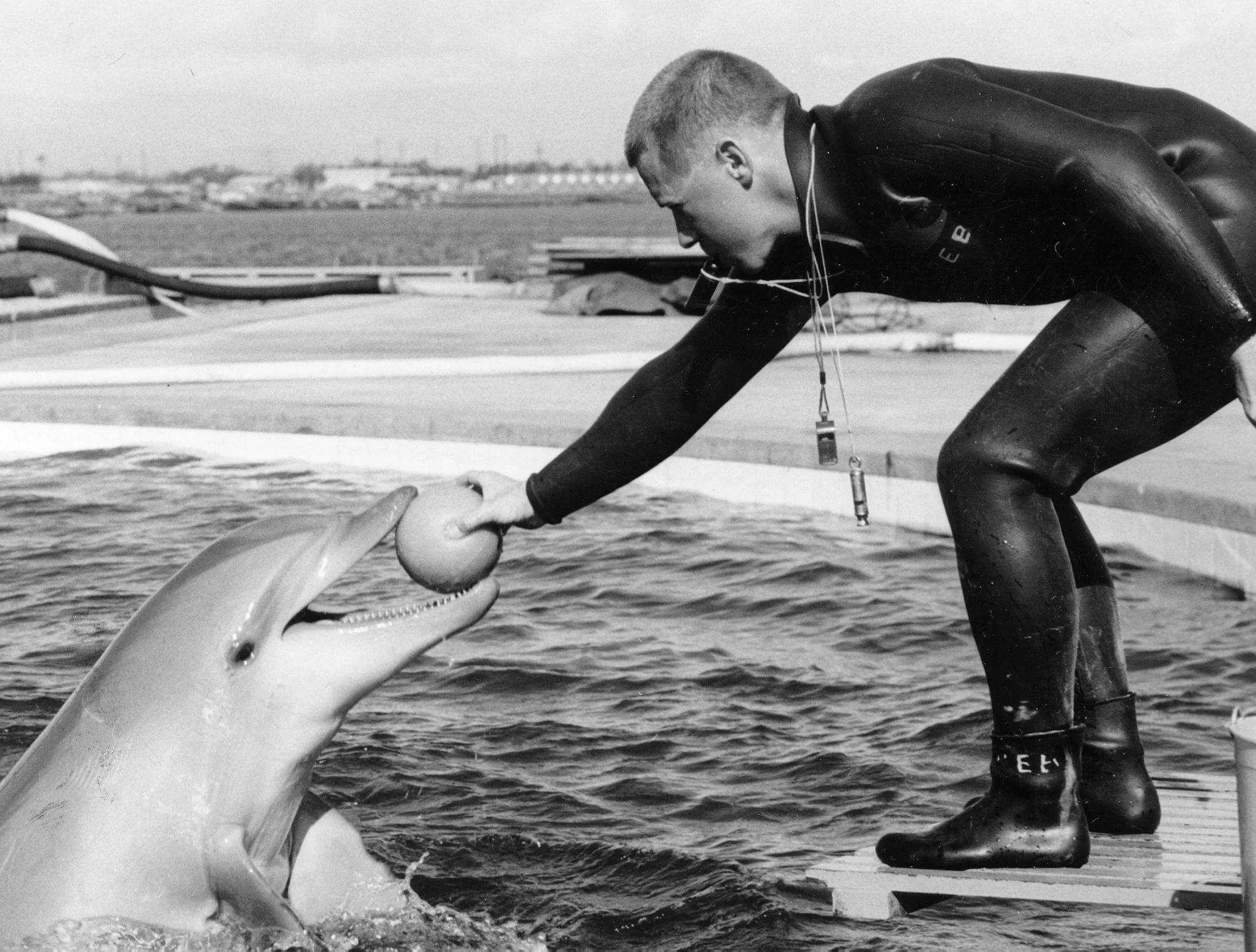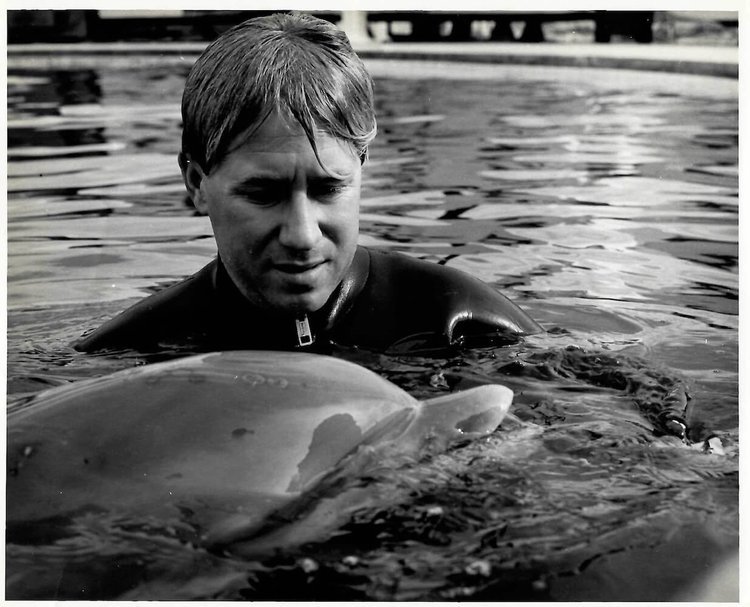
Endorsed by Bob Bailey
Former Director of Training, U.S. Navy Marine Mammal Program
Yes, Chicken Workshops changed my life and can change yours: a retrospective and an invitation.
By Dr. Bob Bailey
Teaching students the practice of animal training ( in conferences, seminars, and workshops) has become big business in many commercial pets, entertainment, and applied technology businesses. Chicken training workshops, what many call “Chicken camps,” is a small part of this teaching industry. Chicken training workshops began in 1948 by Keller and Marian Breland; animal feed salesmen were the first students. The Breland workshops were the first step in the effort to spread animal training as a science – based technology that could be taught to virtually anyone willing to invest the time to learn and practice simple principles, and procedures. The workshops were very successful, and, by 1950, the chicken workshop graduate trainers had traveled all over the United States, border to border, coast to coast, performing tens of thousands of entertaining animal shows featuring the chickens, rabbits, ducks, goats, sheep, and pigs they had trained.
Today a direct descendant of these same Breland – developed chicken workshops is given in Mobile, Alabama, by Kirsten Kraljevic. Kirsten’s workshops are the best learning experience for novice trainers wishing an introduction to animal training fundamentals. At the same time, these same workshops are designed for experienced trainers, testing their ability, and willingness, to change their behavior when needed to most efficiently condition the best behavior. When should the trainer change? How should the trainer change? Can the behavior be taught faster? These are the questions Chicken Workshops teach trainers to ask. Chicken training classes have been teaching students to be critical thinkers and how to ask questions and seek answers for over seventy years. These chicken training workshops allow both experienced and novice trainers to develop and test their skills without endangering the behaviors, and very minds, of their own animals. Trainers don’t take the chickens home with them when they finish the class, only new – found knowledge and skills. Learn new training skills. Test those skills you have. Train a couple of chickens for five whole days!
Let’s turn back the clock and allow me to give my own personal first experience with being taught by chickens. In 1962, at the Point Mugu U.S. Navy Air Station, near Oxnard, California, I learned how little I knew about the “What, when, and how” of animal training. I was the Director of Training, U.S. Navy Marine Mammal Program. My job, as the Director of Training, was to train Navy dolphins, seals, and sea lions to perform specific tasks, and to teach others how to train. When I was hired, I believed I could do the job because of my biology degree and several years’ experience studying and modifying animal behavior.
At about the same time, two pioneering animal trainers and psychologists, Keller and Marian Breland, were hired as the Navy’s chief behavioral consultants. I already knew the Brelands and their teaching of animal training technology, would change my life.
Shortly after my arrival at Pt. Mugu, the Brelands came aboard and began teaching classes in training technology. Six students were in the class, including myself. The classes were five days a week and four to six hours a day. There was a “rhythm” to the repetition of the teaching program: lecture discussion, application; lecture; discussion; application; repeat; throughout the day. The change in the rhythm was in the duration of each of the periods, the lectures gradually shortened, discussion lasted longer, and the application periods, where we applied those behavioral principles to the teaching of our animals, increased the most of all. Less and less, we talked, more and more we trained.
The lectures and discussion periods were familiar to me. The Brelands would present important information and then we would question and, at times, even debate. The Brelands were masters at conducting such classes, encouraging everyone to participate. The Brelands were building our understanding of, and confidence in, the training process. They called this training process “behavior technology.” The practice of this “behavior technology” required information, intellect, observation, perception, and mechanical skills. The big surprise to all of us? We did not train dolphins in this class, we trained chickens! We trained common barnyard chickens! We trained chickens to do simple things such as discrimination’s and progressions. We learned to train these simple things precisely and quickly, and many times with many environmental distractions, to disturb both trainer and chicken.
Months later I saw the wisdom of the Breland’s chossing chickens as their ideal “animal model’ for teaching trainers the practice of modern, science – based animal training. Seventy years ago, when the Brelands conducted their first animal training class, they fortuitously selected the common barnyard chicken. Later, the Brelands searched for a replacement “animal Model,” but they always came back to their first selection, a chicken, and the faster moving the chicken, the better. The students found that the lessons learned training chickens transferred immediately, with some accommodation for physical and psychological variation, to whatever species that was of interest: dolphins, dogs, cats, aardvarks, or zebras.
Later I traveled to Hot Springs, Arkansas where I saw ABE staff training many species of animals. All ABE trainers had learned their training skills by training chickens, sometimes as many as 12 chickens simultaneously. The trainers learned mechanical and observational skills and patience. They learned not only what to reinforce, but what not to reinforce. ABE trainers were taught how to make quick, accurate decisions. They learned training failure did not belong to the animal subject but to the trainer and how they trained. The Brelands, and their employees, were technically far ahead of other animal training practitioners of the day, me included. Over the next three years, I applied the many lessons I learned from the Brelands and ABE staff. Gradually, I saw my future align with applied animal behavior, ABE, and the Brelands. Besides, I found it fun training otters, emus, dogs, cats, horses, donkeys, and even camels.
In 1965, Just before he died, Keller Breland invited me to join ABE. In 1969, I was chosen to be ABE’s financial and operational leader as CEO and COO. In 1976, Marian and I were married. Together, she and I raised my 6 kids (three sets of twins), trained animals, produced animal shows, and taught animal trainers. In 1990, Marian and I closed the company. Marian continued her other career as a university professor. In 1994, she and I began offering chicken training workshops for the first time to the general public. Heretofore, our chicken training classes were open primarily to corporate clients, and government agencies. We traveled all over the United States, pulling a trailer full of chickens and equipment. It was in September of 2001, while Marian and I were preparing to teach another chicken training workshop, that she was stricken by pneumonia and died.
I continued the chicken training workshops, traveling around the world many times. From time to time, I taught with others by my side. I advise and sometimes assist Kirsten Kraljevic in her chicken workshops today and I continue to learn from the many thousands of students I have taught over the years. Who knows how long I can continue. Seventy years is a long time to pursue any profession.
If there was one piece of advice, I could give any trainer both new and experienced serious about their profession,
it would be to take the chicken workshop. I believe it will change you.

